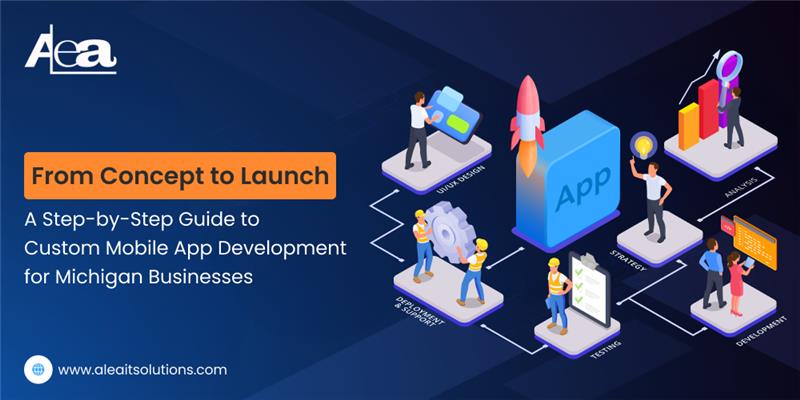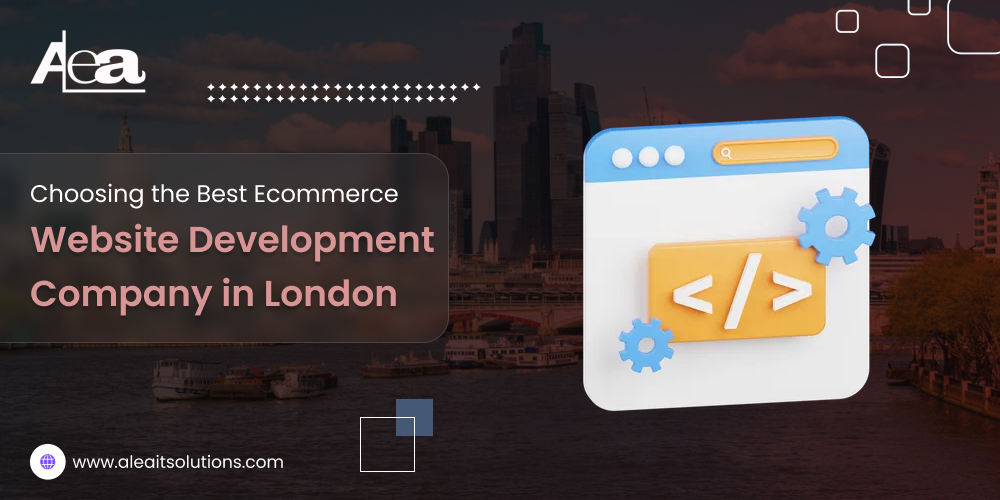Mobile apps are more than only one digital trend; They are essential tools that enable businesses to enhance customer experiences, to streamline operations and stay forward. For Michigan businesses, a custom mobile app can provide an important competitive advantage. However, travel from an early concept to a completely functional app may feel complicated. In this guide, we will break the mobile app development process, which until the launch from the Ideation, to help the Michigan businesses understand the stages involved in creating a custom app to suit their needs.
Step 1: Define Your App’s Purpose and Goals
The first step in developing a custom mobile app is to clarify its purpose and goals. Ask yourself questions like:
- What problems do the app solves?
- Who is the target audience?
- How does it benefit your customers or improve business operations?
Defining these goals will help create a strong base for the design and development of the app. For example, a Michigan Retail Business wants an app that enhances customer loyalty by providing prizes, personal purchasing experiences and easy access to products. By set clear goals, you will have a roadmap to guide the rest of the development process.
Step 2: Conduct Market Research
Before diving into development, it is necessary to conduct market research to compete and understand the needs of your target audience. Analyzing the apps of contestants can provide insight into features, design and functionality that resonate with users, as well as intervals that can fill your app.
In Michigan, local market research is particularly valuable, as customer needs and preferences may vary by the field. This research will also help refine the unique sales points of your app, ensuring that it stands out.
Step 3: Create a Feature List and App Wireframe
Based on your goals and research, start creating a list of features included in your app. General features include user registration, in-app messaging, push notifications and payment options. Pay attention to include only the necessary features in the initial launch, which will maintain development and allow you to bring the application to the market faster.
Next, make the app wireframe – a thick sketch or layout of the app interface. It provides a visual guide for developers and designers to understand the structure and flow of the blueprint app. A well -designed wireframe can help avoid later expensive changes in development.
Step 4: Choose the Right Development Approach
There are many approaches to develop mobile apps:
- Country Apps: Especially manufactured for iOS or Android, offer the best performance but each platform requires separate codebase.
- Cross-platform Apps: made using a framework such as react native or fluters, allowing a single codebase to run both iOS and Android.
To reach a wider audience early for Michigan businesses, a cross-platform app can be more efficient and cost effective. However, if your app requires high-demonstration graphics or complex features, a native app may be a better option.
Step 5: Design the User Interface (UI) and User Experience (UX)
The design of the app is important for its success, as users are more likely to engage with apps that are visually attractive and easy to use. The UI design focuses on the appearance of the app, while the UX design ensures a smooth and pleasant user experience. A good design team will consider branding colors and styles such as Michigan-specific elements to make the app reliable for local users.
Make sure the design of the app is easy, with easy navigation and quick access to major features. The design of the design on real users can provide valuable response to refining the app before going into development.
Step 6: Develop the App’s Frontend and Backend
The development phase is the place where your app starts coming into life. The front of the app interacts with the interface users, while the backand handles the server, database, and business logic.
- Frontend Development: This involves coding visual elements using programming languages such as JavaScript, Swift or Kotlin, it depends on whether you are developing cross-platforms or native apps.
- Backend Development: Manage integration with app data, logic and other systems to ensure smooth operation and data security.
Developers should conduct regular tests during this phase to quickly identify and fix the bugs during the final launch, reducing potential issues.
Step 7: Conduct Thorough Testing
The test is one of the most important stages in mobile app development, ensuring that the app works correctly, looks attractive, and provides a smooth experience. Major areas for tests include:
- Functionality: Be sure to function all the features required.
- Proponible: Make sure the app is spontaneous and user friendly.
- Performance: Check that the app is sharp, responsible and stable under different circumstances.
- Compatibility: Verify that the app works in many devices and operating systems.
Michigan businesses must consider using both automatic and manual testing to catch all possible issues. In addition, beta tests with a small group of real users can offer how the app performs in the real world scenarios.
Step 8: Prepare for Launch
Once the test is completed, the time has come for the launch of the app. This includes:
- App Store Optimization (ASO): Creating an attractive app listing with high quality visual, a compelling details and relevant keywords.
- Marketing Plan: Promoting the app through social media, email newsletters and possibly local partnerships to attract initial downloads.
Michigan businesses can benefit from local participation or targeted advertisement that directly talks to its audience. Additionally, the installation of in-app analytics helps track the user’s behavior and collect feedback after launch, so that you can continue to improve the app.
Step 9: Post-Launch Support and Maintenance
Launch is not the end of your app development journey. Post-launch support is important to maintain high quality user experience. Regularly updates the app with improvement based on new features, safety patch and user feedback ensure that your app remains relevant and competitive.
For Michigan businesses, staying with your app users and addressing their response can immediately help to create customer loyalty and increase retention rates.
Why Choose AleaIT Solutions for Your Custom Mobile App Development?
In Aleait Solutions, we are experts of custom mobile app development to suit the needs of Michigan businesses. Our team of experienced developers, designers and strategists will guide you through every step – to launch and beyond the concept – to ensure that your app not only gets, but is more than your business goals. With specialization in cross-platform and indigenous app development, Aleait Solutions is dedicated to creating a mobile app that runs the results. Contact us today to start your journey in a custom mobile app that changes your business.




